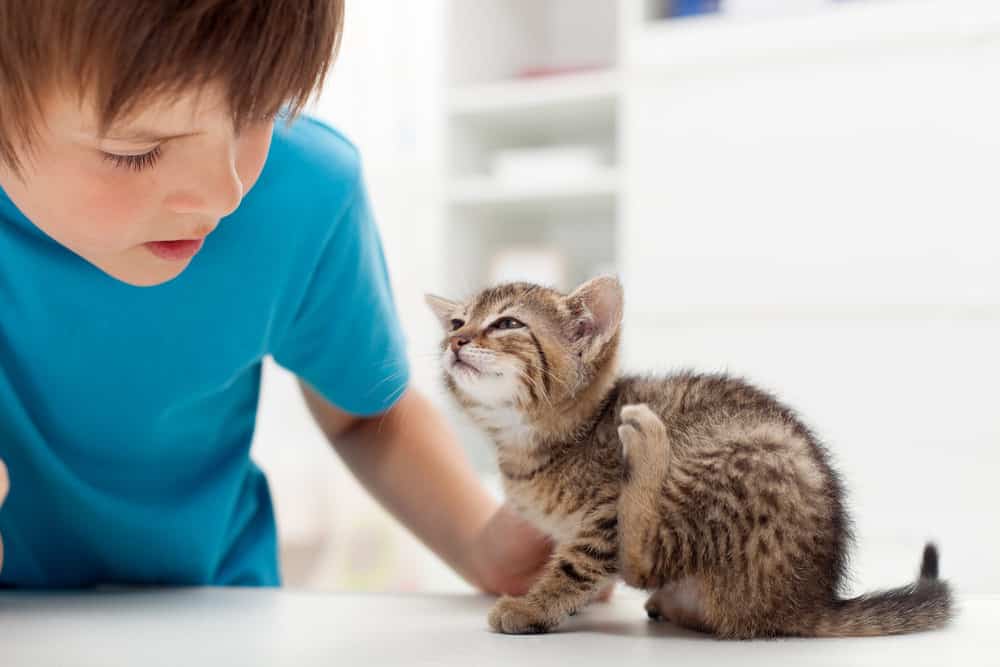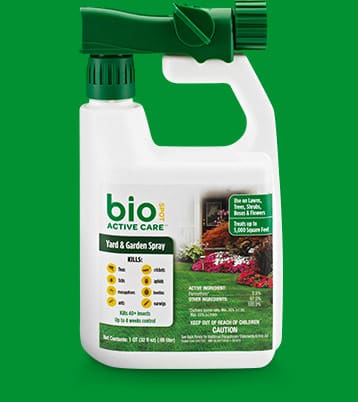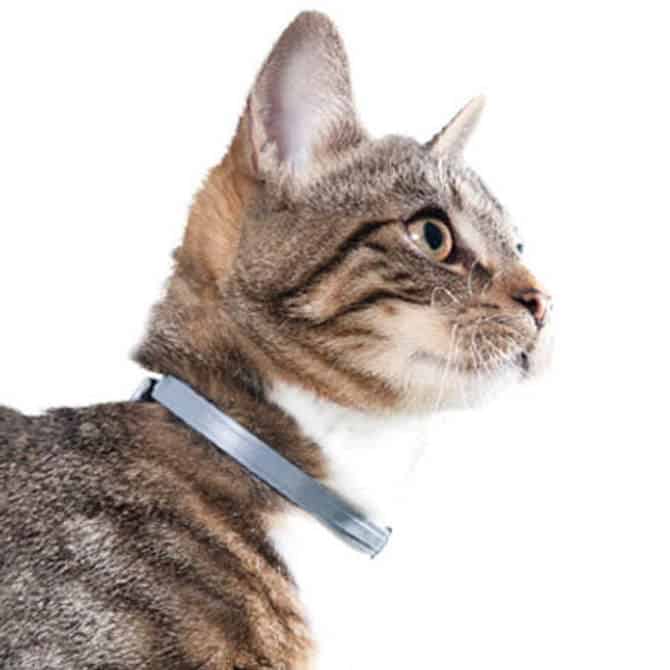Flea Eggs: How to Find and Kill Them
A flea is a parasite that bites and feeds on the blood of an animal. Fleas will feed, mate and then egg production will begin 24-48 hours after their very first meal. To discover everything there is to know about flea eggs, continue reading below.
What Do Flea Eggs Look Like?
Flea eggs are incredibly small and oval in shape. The average dimensions of an egg are approximately 0.5 mm long x .03 mm wide in size. They are not so tiny that they can not be seen by the human eye, although they are not easy to spot, particularly in pets with light-colored fur.
When the flea first lays the eggs, they appear shiny, translucent and white. As the egg ages it will turn more opaque: almost pearl-like. Flea eggs are thought to resemble tiny grains of salt or rice because of their shiny, white color.
The chorion of a flea egg is not very hard; it is smooth, thin, soft and spongy. The permeability of the shell helps the developing larvae breathe.
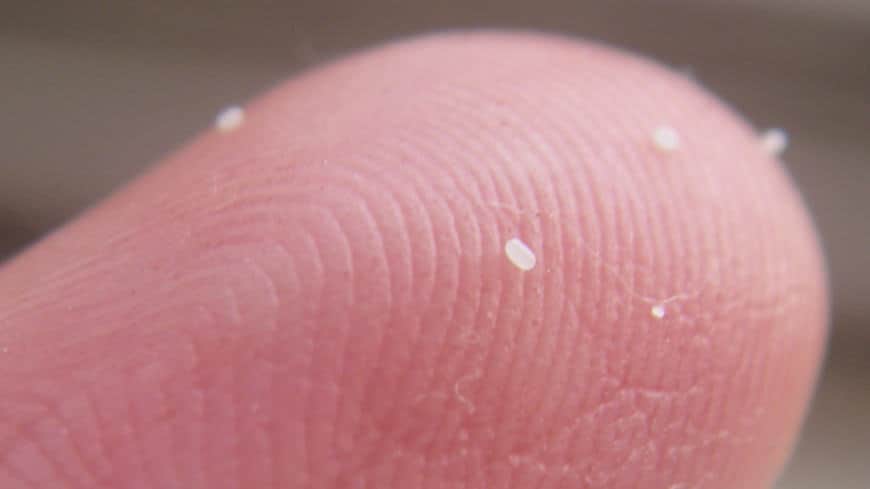
Flea eggs are not as resilient as other insect eggs. When the egg is rendered nonviable, because of low humidity or pesticides, it will collapse in upon itself as it dies.
Where Do Fleas Lay Eggs?
Eggs Are Laid On the Host
Adult fleas jump onto a host animal. That host can be a dog, cat, raccoon, fox or any warm-blooded animal. They will occasionally bite humans, although we are not their preferred choice of host, and they will not lay their eggs on us.
Once attached to their host, the flea will not leave the animal. They will feed, mate and lay eggs on their host until they are dislodged or die. Fleas will only naturally choose to leave a host, if the host dies.
Flea Eggs On Cats and Dogs
On dogs, female fleas will lay their eggs near the hip region of the animal. On cats, the eggs are laid around the neck and collar areas. They prefer these regions because they are the least likely to be groomed. Knowing this information will help you to discover if your pet has a flea infestation, by zoning into the most likely parts of your pet’s anatomy, before proceeding to look for other signs of fleas.
Eggs Fall Off the Host
When a flea egg is first laid, it is slightly sticky. The egg quickly dries and falls off the host into the surrounding area. Wherever the host animal is, at the time the egg falls, is where that egg will stay until it hatches.
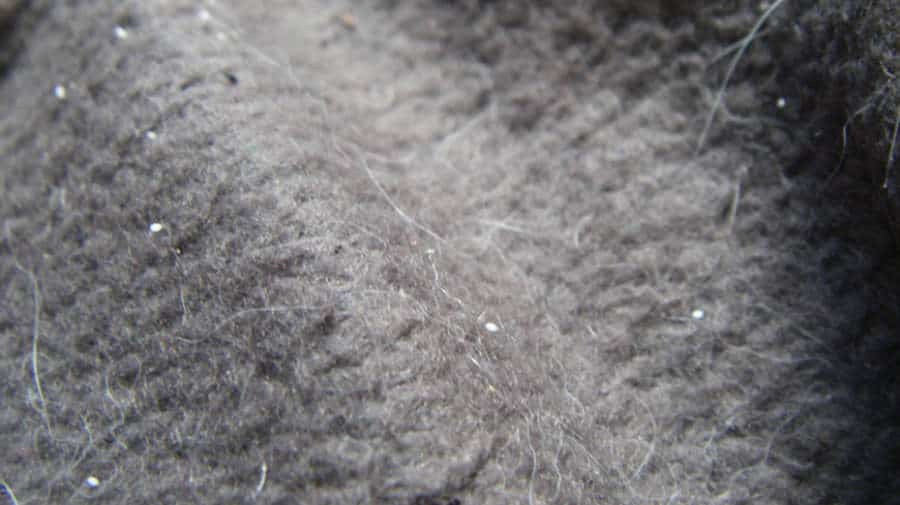
How rapidly the eggs fall off the host animal depends on several factors, including how long the hair is on the animal, how often it grooms itself and how mobile/ energetic the animal is.
When a flea feeds, it bites the animal’s skin. As it bites, its saliva is introduced into the new wound. The flea’s saliva has an enzyme that causes irritation. This, in turn, causes the animal to scratch, bite or groom itself. This hastens the rate at which eggs fall off the host.
Eggs drop into the environment—indoors and outdoors. Anywhere the animal has access to, is where you will find eggs. Eggs have been found in yards and gardens where the host animal spends its time. However, in terms of your pet, your home will have the highest concentration of eggs.
How Many Eggs Does a Flea Lay?
Fleas are prolific reproducers. The average female flea will lay 25-50 eggs daily, throughout her entire adult life. The lifespan of an adult flea can range from 7-100 days. The range in lifespan is generally dependent upon how much the animal grooms itself.
An animal that grooms itself often, like a cat, will see fleas living only about seven days. The average cat can kill three to twelve fleas a day during grooming.
Should an animal not groom itself regularly, a flea will live longer and egg production lasts longer.
How Long Until Flea Eggs Hatch?
There are four distinct stages that a flea goes through in its life- egg, larva, pupa and finally the adult. The time between egg and adulthood in a flea varies. The lifespan of a flea is solely dependent upon the humidity and the temperatures of the environment that it thrives in.
In Your Home
Eggs that have been deposited in carpets are in a favorable environment for incubation. In homes, a flea egg will typically take two to three days to hatch into larvae.
Ideal Conditions
Warm, humid environments are perfect conditions for a flea egg to hatch. The ideal temperature for a flea egg is 32 C (89 F) with 75-92% humidity. With these conditions in place, a flea egg will take approximately one and a half days to hatch into larvae.
Poor Conditions
When the temperatures start to drop, flea eggs take longer to develop. It will be approximately eight to twelve days before a flea egg hatches in poor conditions.
Which Temperatures Will Kill Flea Eggs?
Flea eggs cannot withstand low humidity, extreme heat or extreme cold. Extreme fluctuations in weather and humidity make it difficult for flea eggs to hatch and they will die. So, what are the optimal temperatures to kill flea eggs?
Flea eggs die in temperatures above 38 C (100 F) and if humidity is below 75%. The combination of too much heat and not enough humidity will dry out the eggs. Should any of them actually hatch, the larvae will quickly die out.
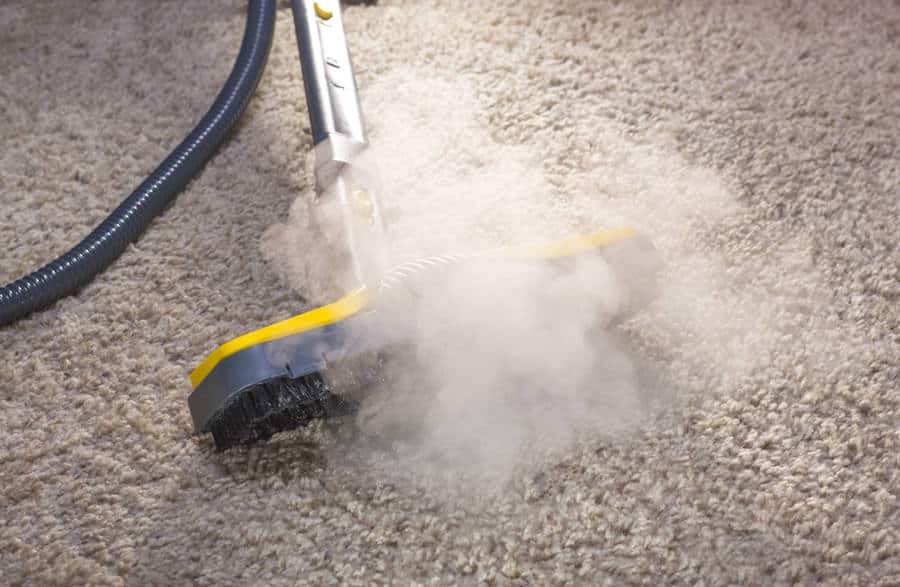
When the temperatures outside begin to drop it takes longer for flea eggs to develop. At 10 C (50 F), the eggs can still develop and hatch, but the larvae will die out not long after hatching. When air temperatures reach 8 C (46 F), flea eggs stop developing.
If cold weather conditions continue, any remaining eggs will die. Flea eggs cannot survive temperatures near freezing, i.e. 3 C (37 F) or below. Temperatures at this level will not only kill flea eggs, the larvae, pupa and adults will also perish.
However, fleas can survive all year round, in heated homes and even in frost-protected animal dens in the wild.
How To Kill Flea Eggs
If you need to tackle an infestation, there are many products on the market that will help you with this.
The best season to begin the battle against fleas is the colder months. Fleas become more active as temperatures rise. The most effective products to kill fleas and eggs include insect growth regulators (IGRs).
IGRs won’t kill adult fleas. They will, however, interrupt the life cycle of the pupa, larva, and eggs. IGRs do not prevent adult fleas from laying more eggs, but those eggs will not hatch.
The negative aspect of IGRs is that they are not instantaneous in effect. They work by stunting immature flea development, stopping eggs from hatching and larvae from growing.
They will not have any effect on adult fleas. This is why you need a product that also uses a chemical. Chemicals will kill the adult fleas.
According to pest control experts and veterinary doctors, some of the best ways to kill flea eggs – and also the easiest – are vacuuming and washing. They also recommend continued use of some sort of chemical prevention.
Vacuuming
If your flea problem is mild, you can eradicate most of the flea eggs with a simple vacuum cleaner.
The best models combine a rotating brush, with strong suction. Vacuuming can also have a positive impact on the population of larvae and pupae, reducing larvae by 50 percent and pupae by 60 percent.
You must vacuum intensely each day for the first three weeks. After this period has passed, you can start to vacuum less frequently, say, three or four times a week.
It is best to incorporate rigorous vacuuming with a special flea treatment for the carpet. Go over the carpet once with the vacuum before applying. This clears any dirt away from the fibers and lifts them up.
Once you have done that, apply the treatment to the carpet according to the instructions. Most treatments for carpets are designed to be left in place for a period of time. This can be anywhere from a few hours to a couple of days.
After you have waited the advised amount of time, vacuum thoroughly again. This removes all the dead fleas, eggs, larvae and pupae which were killed by the treatment.
It’s important to note that if you are using a canister vacuum, that you ensure you empty your vacuum after each use. Vacuum bags should also be disposed of every time.
Flea Collar In the Vacuum
Some people believe that putting a flea collar into the vacuum bag is a good way to kill fleas.
This may help, but it is more of a precaution than an effective flea killing method. Most fleas, eggs and larvae will be destroyed as they are sucked into the vacuum and thrown around the inner bag.
If you want to try this method, be aware that this only works for bagged vacuum cleaners.
Sprays
There is a vast choice of sprays that can be used both inside and outside your home to destroy flea eggs and their larvae. Generally, these sprays employ insect growth regulators to halt the development of the flea population.
A benefit of these sprays is their long-lasting effects. They can continue to protect your property against fleas for as long as seven months after application. If used outdoors, they remain effective for up to three weeks.
Repeat application in the fall is recommended.
Foggers—Flea Bomb
Foggers, or ‘flea bombs,’ are another popular option to destroy fleas. They spread pesticides into nooks and crannies, killing the fleas which are hiding there.
One downside to using these flea bombs is the residue that will be left in your home. This can be off-putting, not to mention, inconvenient. Flea bombs must be used according to the directions if they are to be effective. In order for this product to have a successful result, the fog needs to access all crevices.
Powders
Carpet flea powders are one of the easiest ways to treat a flea infestation. Simply sprinkle the powder across your carpets and soft furnishings, ensuring an even application.
Most products require you to brush the powder into the fibers and leave there for up to 48 hours.
When this time period has passed, vacuum thoroughly to remove all the dead fleas, flea eggs, larvae and pupae. Depending on the severity of the infestation, you may need to repeat the treatment to kill them all.
Dips
Dips can be used to kill a large infestation of fleas on a pet. Dips contain a large concentration of the chemical pyrethrin. A pyrethrin compound will disrupt the fleas’ neurotransmitter secretions and cause paralysis.
However, if the product is not given enough time to act, a flea can recover from the treatment. That is why it is important to leave the treatment on the pet.
You can choose a natural pyrethrum—which is extracted from the flower of a chrysanthemum, or a synthetic one.
The synthetic pyrethrum is much stronger than the natural version. The stronger potency in the synthetic pyrethrum will last a lot longer than the natural one and the flea is less likely to recover.
Professional Pest Control:
For extensive flea infestations, you may need to hire a pest control service to clear the home. Follow up with either flea sprays or powders that will kill flea eggs.
How to Get Flea Eggs out of Pet Hair
Flea Combs
Using a flea comb is perhaps the simplest way to remove fleas and their eggs from your pet. These combs have very finely spaced teeth, which trap the pests hiding among the fur. As you pull the comb through your pet’s coat, fleas and flea eggs are dragged out.
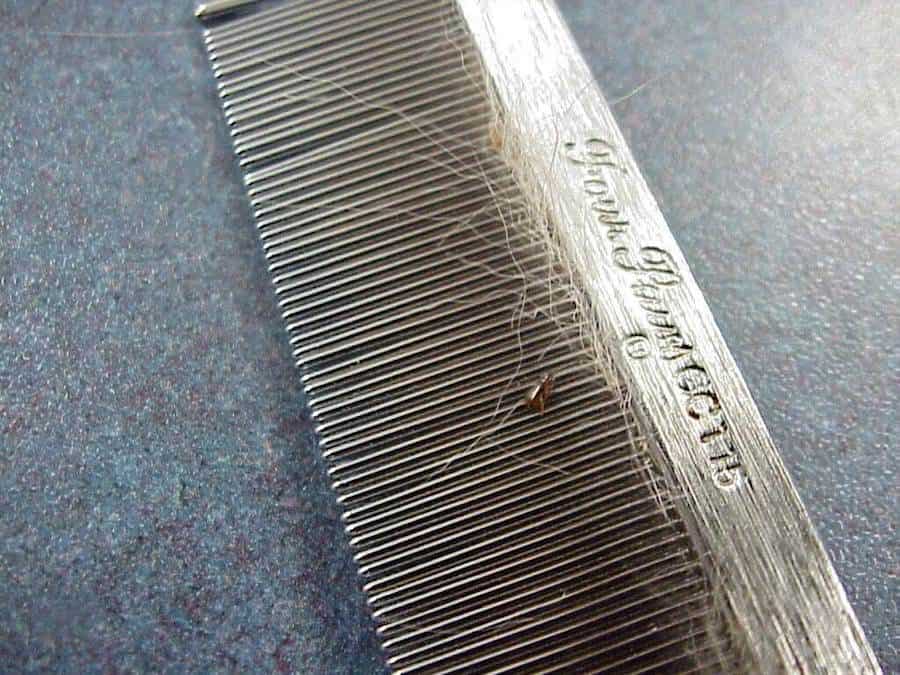
It is good practice to have a bowl or bucket of hot, soapy water to hand when using a flea comb. This is for you to drop any live fleas into, ensuring they drown and do not hop back onto your pet.
Chemical Flea Treatments
Some products are designed to be applied directly to the skin. These treatments usually require a monthly application to be effective. Depending on the formulation, fleas can be killed within as little as a few hours, up to a couple of days.
As with all treatments designed for use on the skin, it is important to follow the directions very closely.
Another way to quickly soothe your pet is the use of flea shampoos. These are fantastic for both killing and repelling fleas, which are living in the fur. Massage the shampoo into the coat, leave for a few minutes and then rinse.
Never use shampoos for dogs on cats or vice-versa. Cats are very sensitive to chemicals and may become very sick if exposed to high amounts. If you are unsure whether your pet is old enough for chemical shampoos, check with your veterinarian.
You may need more than one application of the flea shampoo to kill the adult fleas. After the bath, you will be able to comb the dead fleas, eggs and feces from your pet’s hair.
Follow up with flea sprays and powders. They will kill any remaining fleas and eggs that may be on your pet. Once the fleas and eggs have been removed, you will need to keep up with the preventative treatments. This will help to avert a further infestation.
How to Get Flea Eggs out of Bedding/Clothing
What if your pet has been in your bed or laying on your clothing? Now the fleas and eggs will be on these items too.
As noted above, fleas cannot survive in temperatures at or above 35 C (95 F) for very long. Flea eggs die if temperatures rise above 38 C (100 F) and the humidity is below 75%.
Therefore, the simplest way to remove them is by machine washing your clothes and bedding on a high-temperature setting. The water temperature needs to be at least 60 C (140 F) to be productive. Afterwards, dry the clothes in a dryer on the hottest setting, if possible.

The trick is how to get these items to the washing machine, without further spreading them around your home.
Clothes and Bedding That Can Be Washed
- Place all items in a plastic bag and take them to the washing machine.
- Use a soap-based detergent.
- If your clothes can be bleached, use it as per the instructions. If not, try a disinfectant that is pine based. Add one cup to a top load washer or half a cup to a front load washer.
- Wash the clothes on the hottest wash cycle the items can handle.
Your clothing and bedding should be clear of fleas and eggs after washing. Do this with every piece of clothing or bedding that has been in contact with your pet.
Clothing That Cannot Be Washed
Putting clothes into a dryer at the hottest setting for a minimum of 30 minutes should destroy the fleas and the eggs. The lack of humidity and the heat will kill them.
Cleaning Your Mattress
If the flea infestation has reached your mattress, more drastic action is required.
- After removing all the bedding from the mattress, vacuum the mattress and surrounding areas thoroughly.
- Treat the mattress and surrounding rugs by spraying them with a natural flea spray. Let the spray dry.
- Once the spray is dry, use a mattress cover to seal up the mattress. First, sprinkle food grade diatomaceous earth onto the mattress, then seal the mattress inside the cover.
- Leave the mattress cover on for a month. After this time, remove the cover and give it a good wash.
- Vacuum the mattress again.
It is also worth noting that if you transport your pet to the vet for a flea treatment, you should treat your car as well.
Summary
Now that you are aware of what a flea egg looks like, you should hopefully be able to spot them on your pet, should an infestation present itself. Knowing how quickly fleas can reproduce and which temperatures a flea can thrive in, will undoubtedly persuade you to act fast before your home invasion gets out of hand.
By using the methods and techniques above to thoroughly clean your house and furry friend, you are sure to eliminate most of the population, and can, therefore, begin to take preventive measures to stop the problem re-occurring.


